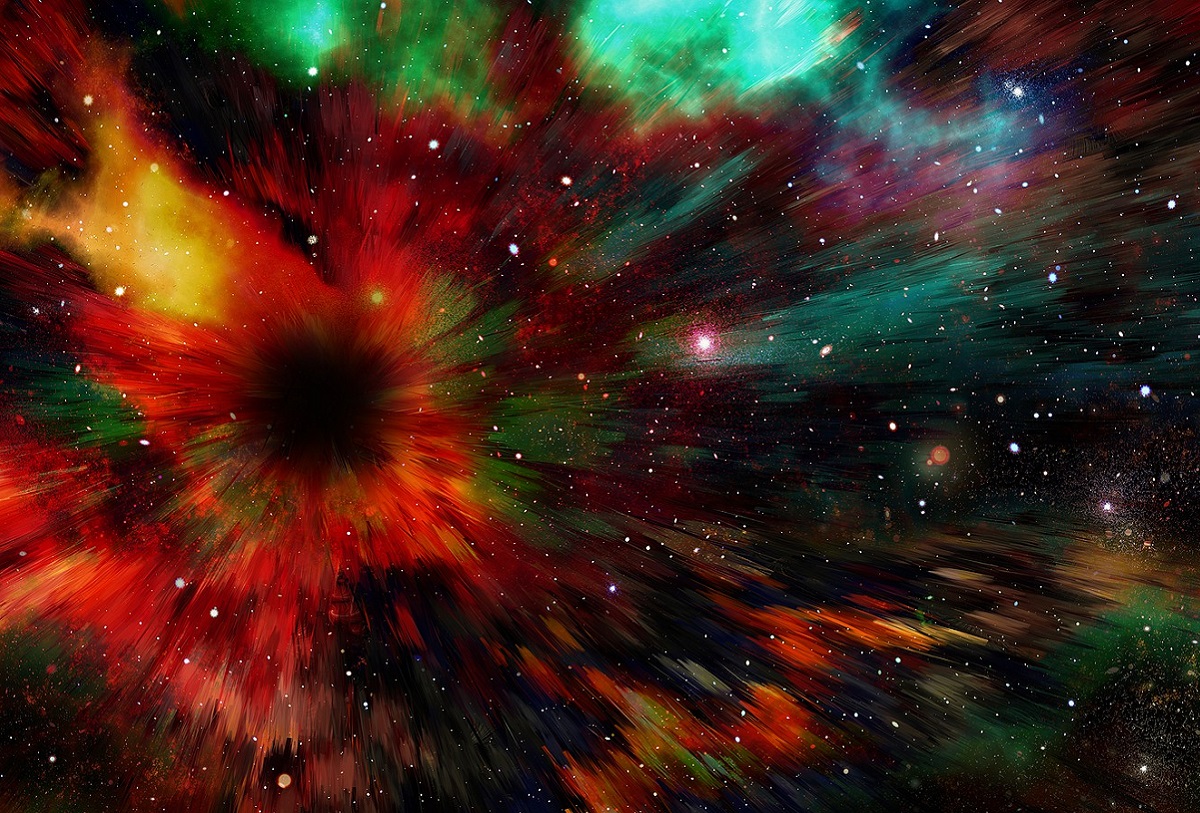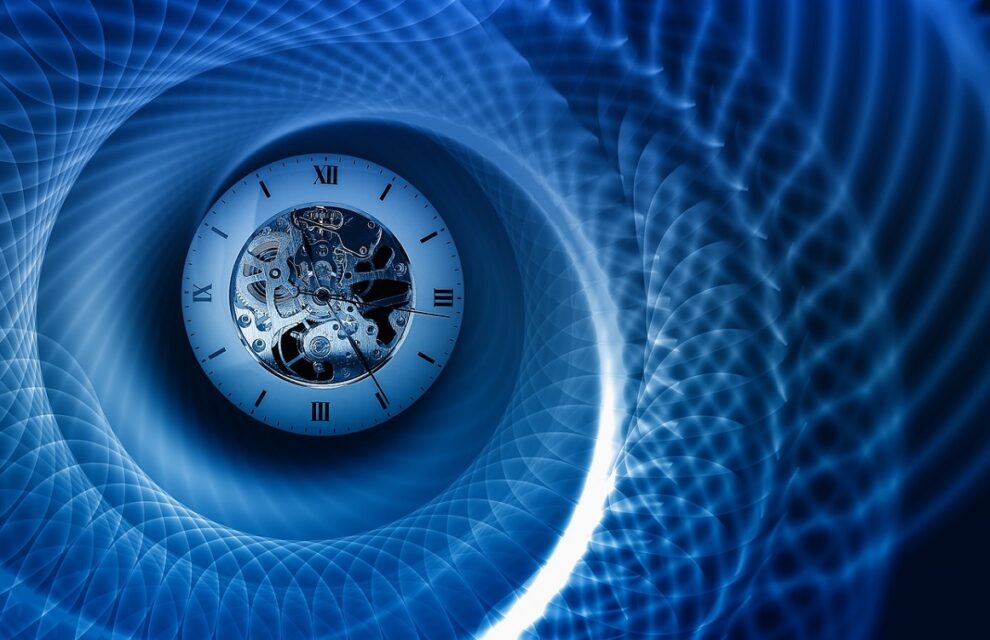Today we take for granted the existence of a time continuum including a unique past, a unique present and a unique future. This continuum is a legacy of the Bible, according to which time moves forward from the past through the present to a culminating point in the future.
But I can think of two alternative models of time developed outside of the context of Jewish monotheism: I call them the “regressive” and “circular” views of time (in the latter case, “cyclical”, although commonly used, does not seem as accurate a description of time moving around like a giant wheel and repeating itself periodically).
The “regressive” model of time is to be found throughout the ancient world, prior to the emergence of Judaism. The fact that Genesis gives an account of the primordial Fall from Paradise at the beginnings of time should not be confused with the regressive view of time, however. The Bible clearly projects the future dimensions of the original Fall: man, having once become a captive of sin, now has to ransom himself through obedience in the present to gain future redemption. In fact, the entire Bible, Jewish and Christian alike, is focused on the future redemption of fallen humanity, on recovering the initial state of grace. Otherwise, why should Jesus Christ be presented as a second Adam?
It is striking that Sumer, the earliest known civilization, left no trace of myths pertaining to the future. According to Samuel Noah Kramer, the Sumerians took a pessimistic view of man and his future. They felt nostalgia for the secure old world they had known and whose traces were everywhere to be seen around them; they wanted to live a life free of fear, poverty and war. But whereas they believed that long ago men had lived in a state of happiness, they could not believe in a better future. They considered it was impossible to see beyond the present into the future, since only the gods themselves could ever contemplate destiny. Time thus ended abruptly in the present.
A similarly pessimistic view was held by the Egyptians, for whom the heroic achievements of the past were everywhere in evidence, but the future was a time of narrowing possibilities. As Henri Frankfort writes, “For the Jews, the future is normative. For the Egyptians, on the other hand, the past was normative; and no pharaoh could hope to achieve more than the establishment of the conditions ‘as they were in the time of Re, in the beginning.’”

In the Greek poet Hesiod’s Works and Days (fl. C. 700 BC), we find expressed the powerful myth of the Golden Age, according to which five races have appeared on the face of the Earth. With this poem, Hesiod seeks to change the ways of his mean-spirited and selfish brother Perses, by conjuring up the image of a happier society where justice was its own reward. The myth of the Golden Age symbolizes the gradual decay and fall of man from his godlike status in the beginning, and thus resembles the regressive view of time developed by other ancient peoples.
The five races are as follows: first the Golden Race lived like the gods and felt no sorrow, did not toil, but rather feasted gaily all the day long; the greatly decayed Silver Race, whose idleness, sin and folly earned the scorn of the gods; the Bronze Race, lovers of battle and horror; a fourth race of demigods, righteous and heroic; and Hesiod’s own Fifth Race: “Dark is their plight. Till and sorrow by days are theirs, and by night the anguish of death; and the gods afflict them and kill… And Zeus will smash them in turn on his chosen day…” Although Lucretius in the second century BC did not believe in the gods, he nevertheless adhered to the myth of the Golden Age.
In the account the highly inventive Latin poet Ovid (43 BC – AD 17) gives of the creation of the world in the epic poem Metamorphoses, there is a similar rendering of the Golden Age. Like Hesiod, Ovid had difficult personal circumstances: he had to complete Metamporphoses in exile on the Black Sea, after committing an unknown indiscretion during the reign of the emperor Augustus. “In the beginning was the Golden Age,” writes Ovid, “when men of their own accord, without threat of punishment, without laws, maintained good faith and did what was right. There were no penalties to be afraid of, no bronze tablets were erected, carrying threats of legal action, no crowd of wrong-doers, anxious for mercy, trembled before the face of their judge; indeed, there were no judges, men lived securely without them…. Last of all arose the age of hard iron: immediately, in this period which took its name from a baser ore, all manner of crime broke out; modesty, truth and loyalty fled. Treachery and trickery took their place, deceit and violence and criminal greed.” The myth of the Golden Age still had a large following during the Renaissance, largely by means of Ovid, who succeeded in giving it new vigour, and this myth reappeared in the nineteenth century, when some millenarian writers “reversed” the ordering of time, placing the Golden Age in the future instead.

Another example of the regressive model of time is furnished by the myth of Atlantis, which Plato developed in the Timaeus and the Critias. Plato here writes of an ideal commonwealth, the island of Atlantis, situated 9,000 years before the birth of Solon: Poseidon wisely inaugurated peace, prosperity and a spirit of sharing on the island; under his benevolent reign the Atlantean people enjoyed considerable wealth, because of mines located on their island as well as regular sea-borne commerce; they had an abundance of wood, elephants, race horses, pastures, grasses and fruit-bearing trees; they built a beautiful city of palaces and temples, golden statues, canals, aqueducts and every refinement known to man. But Plato develops this compelling vision of a long-lost wonderland in the perspective of the regressive view of time: the wonderland existed no longer. “By such reflections and the continuance in them of a divine nature, the qualities which we have described grew and increased among them; but when the divine portion began to fade away, and became diluted too often and too much with the mortal admixture, and the human nature got the upper hand, they then, being unable to bear their fortune, behaved unseemly.” After this, Zeus, the god of gods, perceived that an honourable race was in a woeful plight; and although the dialogue ends abruptly, we are left to understand that Zeus inflicted severe punishment on the Atlanteans; other traditions maintained that the fabled city of 9,000 years beforehand was engulfed by the sea.
It may seem peculiar to compare the Golden Age of Hesiod and Ovid to the Atlantean myth of Plato: the Golden Age pictures the slow degeneration of humanity by means of a depressing succession of ever-weaker races, whereas the myth of Atlantis situates a single primordial paradise in a remote past. What these various myths share, however, is the way they move in a backward direction, and locate a blissful life free of want and suffering in a past which can be neither revisited nor recreated.
Another model of time held in Antiquity was the “circular” view. (I won’t comment here on cosmic cycles, the Great Year or periodicity. Nor is this the place to explore the repetitive pattern of the growth and decay of societies as identified by Polybius in The Histories, which is closer to a purely cyclical view (that is, variations on a theme) than to a circular view (that is, the same theme repeated periodically). I will instead comment on Aristotle’s idea of the eternal universe.)

Aristotle (384 – 322 BC) is opposed to Plato’s view that there has been a beginning of all things, a moment of time when Creation occurred. Time itself could not have come into being at a given time, as Plato theorizes. On the contrary, the universe is eternal, and if it is subject to periods of change, that movement of change comes around full circle once every thousand years, when the Sun, Moon and planets return to the same positions of a millennium beforehand. Future events are not just located in the future; nor are past events just located in the past. According to the circular model of time, moving along like a huge cosmic wheel, events can return or recur after one thousand years to be re-enacted once again. A person can thus live both one hundred years after and nine hundred years before the same historical event: “How are the concepts of priority and posteriority to be taken? Are we to take it that the generation of the Trojan War is prior to ours, and that their predecessors are prior to them, and that those who are previous are prior ad infinitum? Or, if the Universe has a beginning and a middle and an end, and if, when anybody is brought by old age to the terminus, he comes right back again to the starting-point, then what stands in the way of our being nearer to the starting-point than the generations of the Trojan War were? And if, in virtue of this, we might possess priority, which stands in the way of a correspondence between the process of the genesis and disintegration of things subject to decay and the circular motion that is characteristic of all the heavenly bodies? Why should not their genesis and decay be repetitive, in the sense of the proverb that ‘Human life is a vicious circle’? It would be silly, of course, to suppose that the same state of human society was reproduced statistically, but a morphological reproduction would not be so difficult to demonstrate. On this showing, we might actually possess priority, and one might conceive the structure of the series as a continuous and uniform process of coming round again full circle to the starting-point. According to Alcmaeon, human beings are subject to death because they do not possess the art of joining their beginning to their end; and it is a brilliant observation if one takes the aphorism symbolically without attempting a literal interpretation. Well, if human history is a circle, and if a circle has no starting-point and no terminus, it follows that the priority which consists in being nearer to the starting-point cannot be possessed either by us over the generation of the Trojan War or by that generation over us.”
It is not clear whether Aristotle really takes this idea seriously, or whether he is merely “toying” with it, as Stephen Toulmin and June Goodfield have suggested in The Discovery of Time. What is clear is that this circular view of history depreciates the unique character of events, since they are inevitably bound to recur every thousand years, in a repetitive pattern on the analogy of the circular movement of celestial bodies.
Between (1) the arrow-like nature of Biblical time, (2) Hesiod, Plato and Ovid’s regressive view of time and (3) Aristotle’s cosmic wheel of time, there is a lot of material for fantasy and science fiction!
Putting these three models aside, I see time as a point – the present moment – we are at precisely this point, which is as large or as small as we like.


